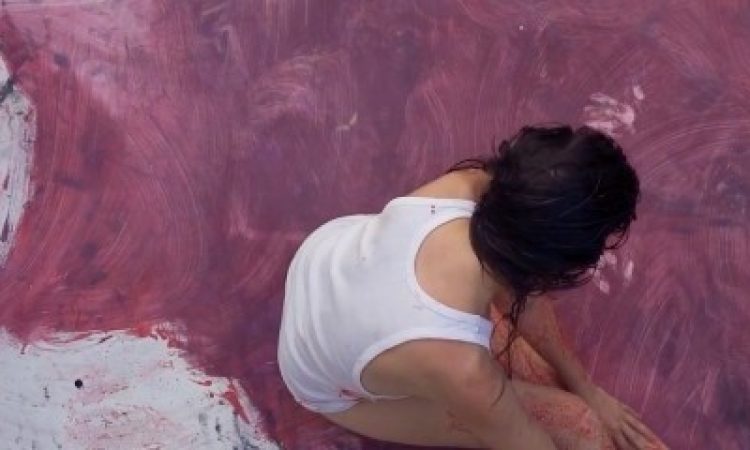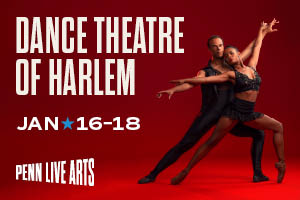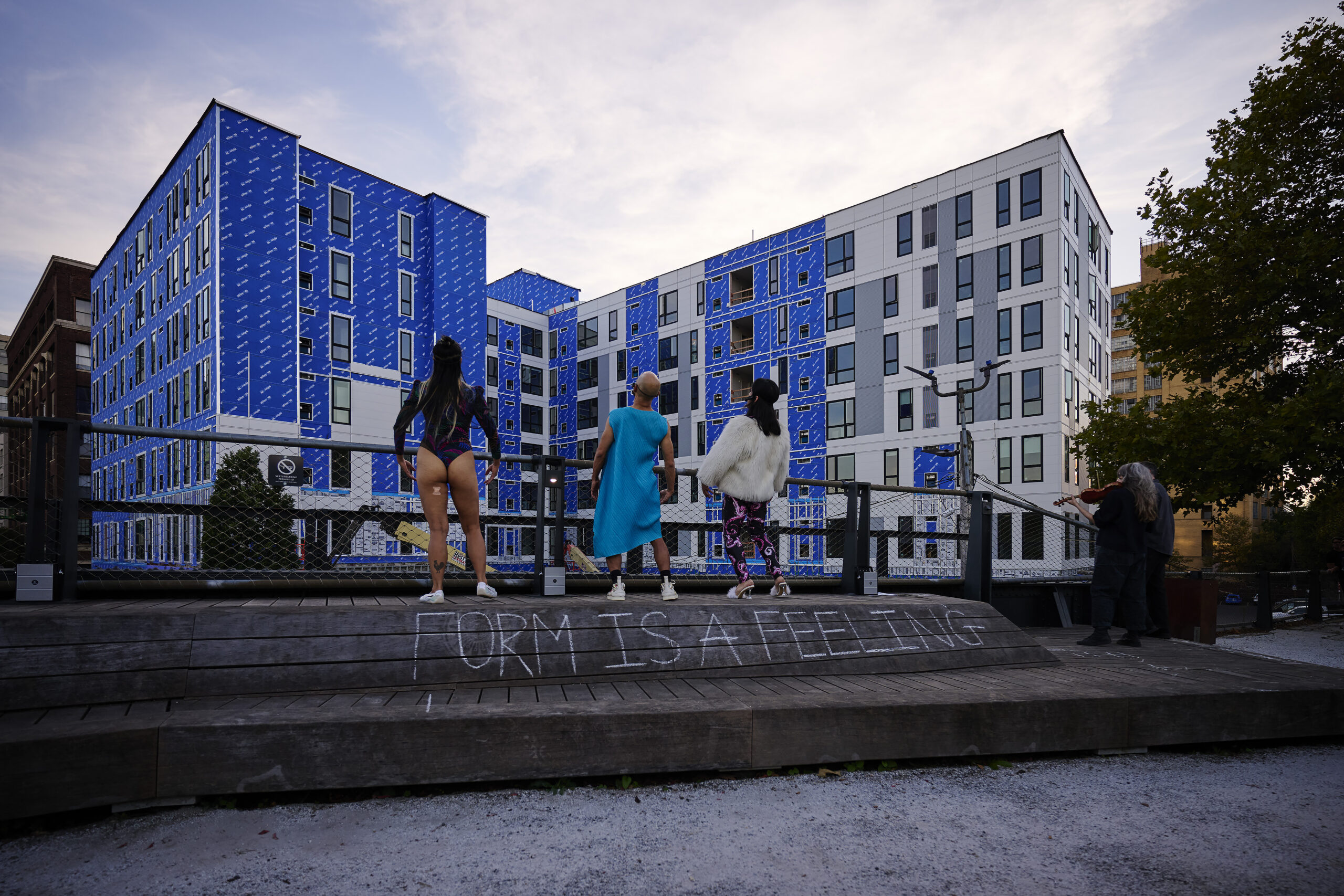Even though the dance world is filled with women and gender non-conforming folks, cisgender men still make up the majority of leadership positions. Consequently, I rarely hear the stories of folks who bear the brunt of marginalization. So, when I first learned about Marlen Puello’s work, I appreciated her directorial and choreographic voice.
Recently presented in this year’s digital Fringe Festival, her latest film, Homo Femina, is a demonstration of gendered violence against women. I chatted with Puello about her background, what led her to choreography and direction, the process of making a dance film with long time collaborator Magalí Baratini, and our mutual love for Ana Mendieta.
Joy-Marie Thompson: What are your pronouns, and where are you from/based?
Marlen Puello:
She / Her
Woman / Mother / Freelance Artist / Emigrant.
Life crossed by losses, uprooting, and multiculturalism.
I was born in Havana, Cuba. At the age of twenty-one, I left Cuba and went to seek a new life in Argentina. I found my place in the world in the city of Rosario, which welcomed me and allowed me to create one of the biggest projects of my life: Cuba Ballet Rosario, where I was a producer. After 20 years of living in Argentina, I decided–out of love–to establish my place of residence in the city of Stockholm, Sweden, where I live today with the Cuban-Argentinian-Swedish family that I have built. Now, I am living with the challenge of living and working between Sweden and Argentina.
JMT: You first started dancing at the National Ballet of Cuba. How was your experience there, and did it influence your trajectory into choreography and direction?
MP: I began my studies in classical dance at the age of 11 at the National Ballet School of Cuba. I discovered my passion for choreography and directing at an early age. At 14, I began to choreograph and participate in national competitions where I won prizes. At the end of my studies I received a proposal to go study choreography in the former USSR, but it coincided with the fall of the Socialist Bloc. Consequently, those agreements between Cuba and the USSR for me to study choreography were canceled. So, I entered the Faculty of Performing Arts of the Higher Institute of Art (ISA) at the University of Havana for my Bachelor’s degree.
JMT: What was the process like to make this dance film?
MP: This project was born in the midst of the pandemic. Being confined by COVID-19’s social distancing regulations, I was affected by a lot of the news. The news that overwhelmed me the most was how intra-domestic violence had increased. There is a standardized, subtle, almost invisible violence that underlies language; that resides in the intimacies of spaces such as the home. The most common abuses occur within the family and acquaintances. There is a bigger possibility of being raped or abused by someone you know than on the street, and it is one of those spaces where the patriarchal mandate is silent. And I feel like we all need an incisive look.
So, Homo Femina was born. In 2021, we decided to make it an audiovisual dance project, and Magalí Baratini, the lead dancer in the film, formed a team of artists who we completed the entire production with and from there the project grew. I’m also especially grateful for the incorporation of the Argentine writer, Patricia Cuaranta, whose writings are featured in the film in an effort to put into words the misogynistic and painful situations that are silenced.
JMT: Homo Femina is, essentially, a solo show for dancer Magalí Baratini. How did she influence the choreography?
MP: We have a long history together. I was her ballet dance teacher, she’s worked with me on numerous stage productions and has become one of my favorite artists. I recognize that to work creatively I need to establish a personal link with the artist. Magalí is an artist with a lot of potential. Intuitive, theatrical and in this project we have shared co-creation for the first time. Each choreographic moment was composed by her.
JMT: It strikes me that the color red is a motif that appears in your work. There is a scene where Magalí is wearing pointe shoes covered in red socks. Can you explain the significance of that motif in relation to this film specifically?
MP: If I had to think of a color that identifies all women*, it would be red like blood. Our menstrual period. Blood and red is present throughout the entire work. That section in Homo Femina with the pointe shoes covered in red socks is a metaphor for the objectification and sexualization of the female body. She’s mostly naked but there’s an emphasis on those feet to highlight fetishization. Her breasts and pubic area are censored too. And let’s not forget that the sale of photos of female feet on the internet is incredibly successful. Are feet sexual? Is the female body absolutely sexual? Or is the gaze responsible?
JMT: In the description for Homo Femina, you mention your love of Ana Mendieta. In the film, there is an overhead shot of Magalí doing floor work on what looks to be a canvas covered in red paint. I couldn’t help but see the connection to Mendeita’s Body Tracks (1982) where she smears animal blood and tempera paint onto a white canvas. What I see–in both pieces–is a declaration of the fact that there are specific acts of violence inflicted upon women. Would you care to speak to that?
MP: Yes, Ana Mendieta is an artist with whom I feel a deep connection. Artivist, feminist, Cuban, exiled, and a performer. She was a woman who used her body and her experiences being a woman in her work. Her early work has a lot to do with this interrogation towards her identity as a Latina, a woman and as a person displaced from your country. Ana has been the axis and the aesthetic inspiration in Homo Femina. The fourth section of the film is inspired by Mendieta’s work Untitled- Glass on Body Imprints (1972) while the fifth section is inspired by Body Tracks.
JMT: What do you want people to understand about you as an artist?
MP: As an artist, I am very interested in using art as a tool for social transformation. I believe in the mission that we artists have in society: to raise awareness, to disturb, to open questions, to question the normalized. Our goal for Homo Femina is that, at least in Argentina, the film can be supported and shared in schools and universities to raise awareness about gendered violence.
JMT: Do you have any advice for the young choreographers reading this?
MP: Yes, of course. We know that directing and choreographic positions are generally assigned to men. We have to continue fighting for a more equal society. It should be possible to enjoy the same privileges as male artists. From the tribune of creation we can contribute to a better world as we women are increasingly visible.
*The writer, Joy-Marie Thompson, and tD’s editorial staff want to note that menstruation is not exclusive to ciswomen and womanhood is not defined by menstruation.
Homo Femina, Marlen Puello, Philadelphia FringeArts Festival, Sept 8- Oct 2, 2022
This interview was edited and condensed for length and clarity.






